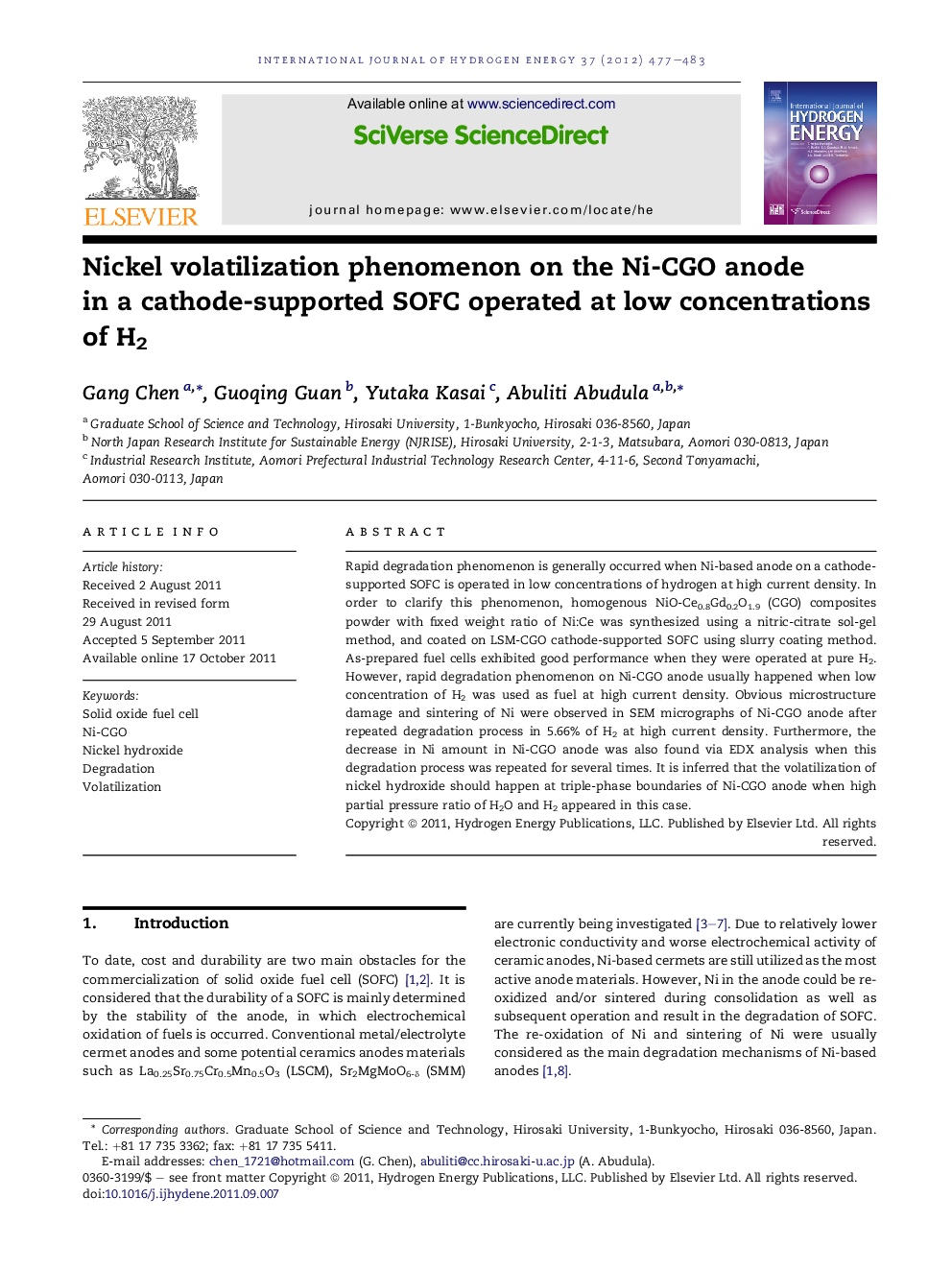| Article ID | Journal | Published Year | Pages | File Type |
|---|---|---|---|---|
| 1277161 | International Journal of Hydrogen Energy | 2012 | 7 Pages |
Rapid degradation phenomenon is generally occurred when Ni-based anode on a cathode-supported SOFC is operated in low concentrations of hydrogen at high current density. In order to clarify this phenomenon, homogenous NiO-Ce0.8Gd0.2O1.9 (CGO) composites powder with fixed weight ratio of Ni:Ce was synthesized using a nitric-citrate sol-gel method, and coated on LSM-CGO cathode-supported SOFC using slurry coating method. As-prepared fuel cells exhibited good performance when they were operated at pure H2. However, rapid degradation phenomenon on Ni-CGO anode usually happened when low concentration of H2 was used as fuel at high current density. Obvious microstructure damage and sintering of Ni were observed in SEM micrographs of Ni-CGO anode after repeated degradation process in 5.66% of H2 at high current density. Furthermore, the decrease in Ni amount in Ni-CGO anode was also found via EDX analysis when this degradation process was repeated for several times. It is inferred that the volatilization of nickel hydroxide should happen at triple-phase boundaries of Ni-CGO anode when high partial pressure ratio of H2O and H2 appeared in this case.
Graphical abstractFigure optionsDownload full-size imageDownload as PowerPoint slideHighlights► Homogenous NiO-CGO composites powder is fabricated by a sol-gel method. ► Rapid degradation of Ni-CGO anode in low concentration of H2 is studied. ► Serious structural damage occurred in anode after repeated degradation processes. ► Volatilization of nickel hydroxide is referred as dominant degradation mechanism.
